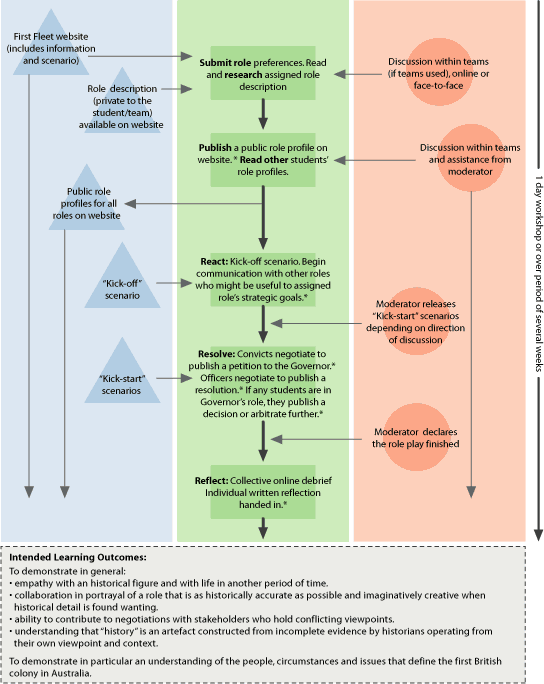|
SUPPORTS SUPPLIED
Support is provided in the form of moderator/s, team members,
other learners.
SIGNIFICANCE OF SUPPORT STRATEGIES
The support strategies ARE the learning design in the same
way that the assessment IS the learning design. The learning
design is about communication and interaction and the support
structures provide that interaction.
SUPPORT STRATEGY ADAPTATIONS
The teacher as moderator is central to the role-play in order
to encourage learners to interact with other learners, to
help them to stay in role, to decide when to insert "kick-start"
scenarios, to arbitrate on unacceptable etiquette, to decide
when the role-play is finished and to debrief learners. Use
of more moderators could be considered, one per camp, depending
on the class size.
Learners playing one role in teams is not essential but it
can be more motivating and educationally effective.
|
